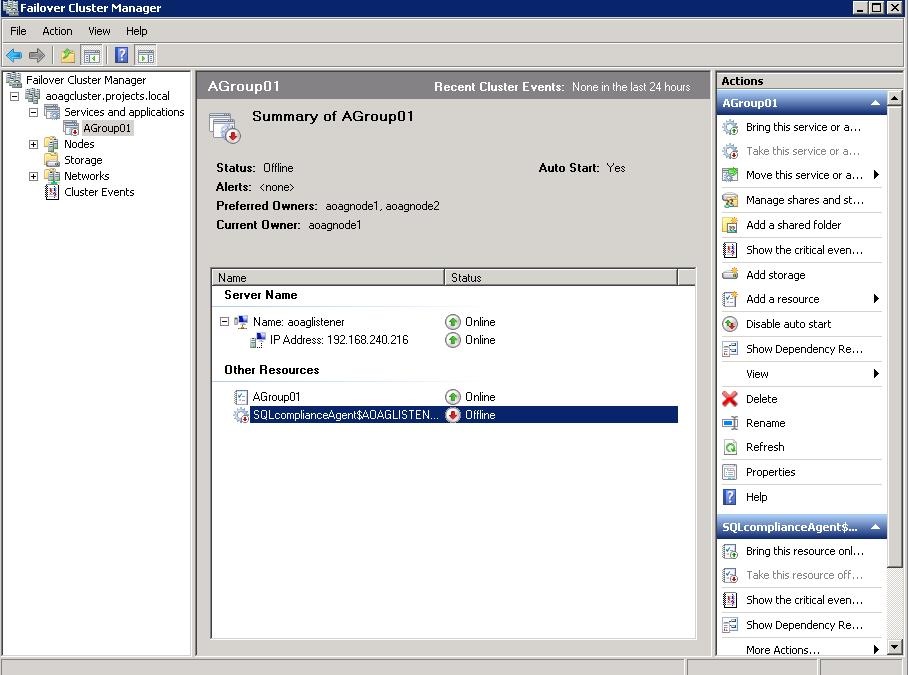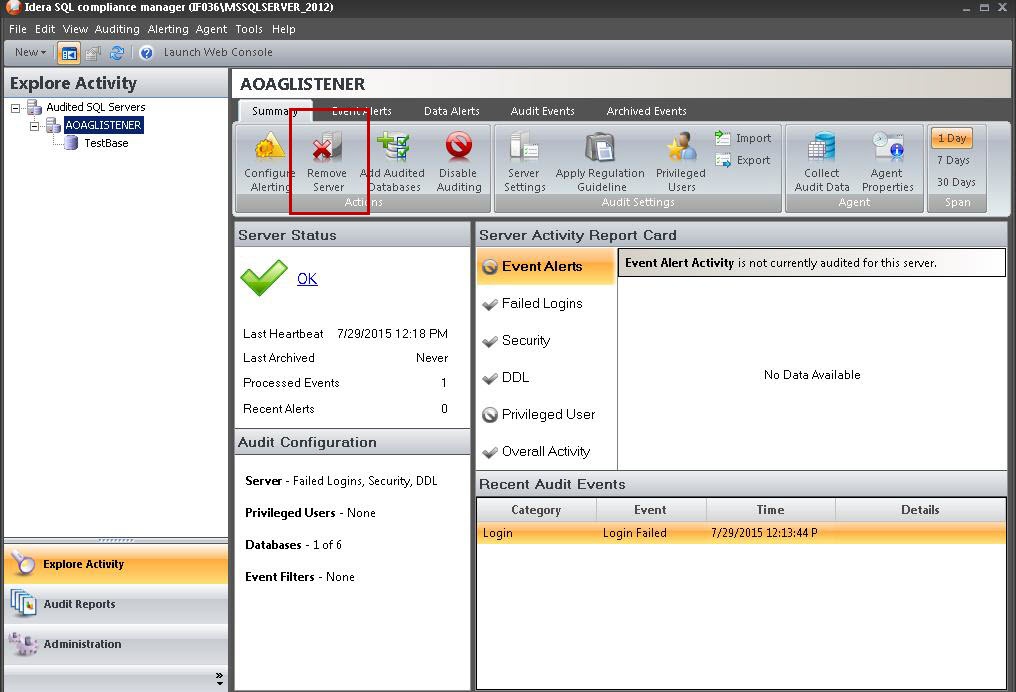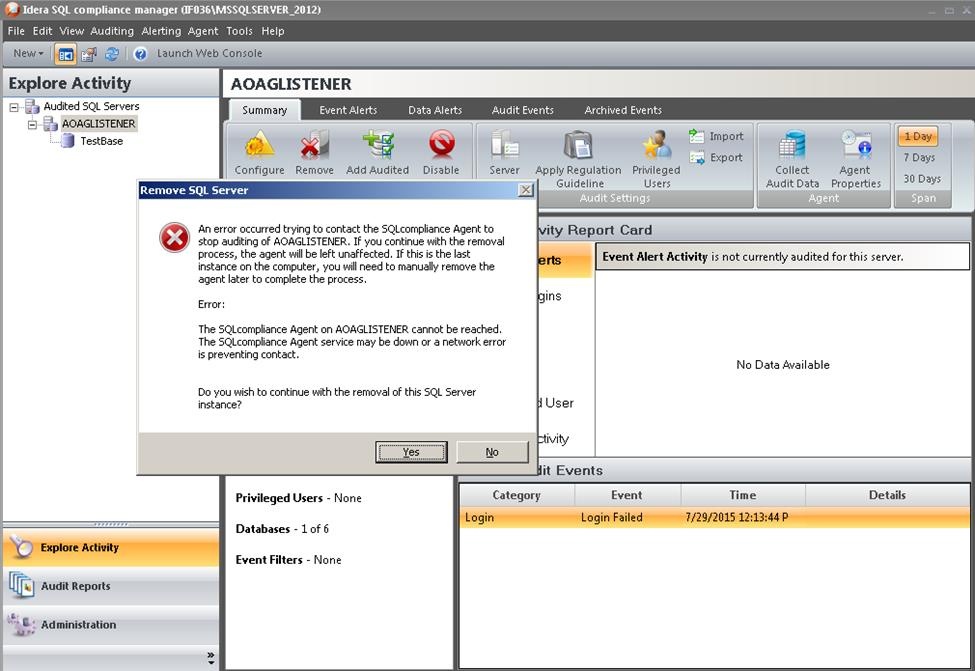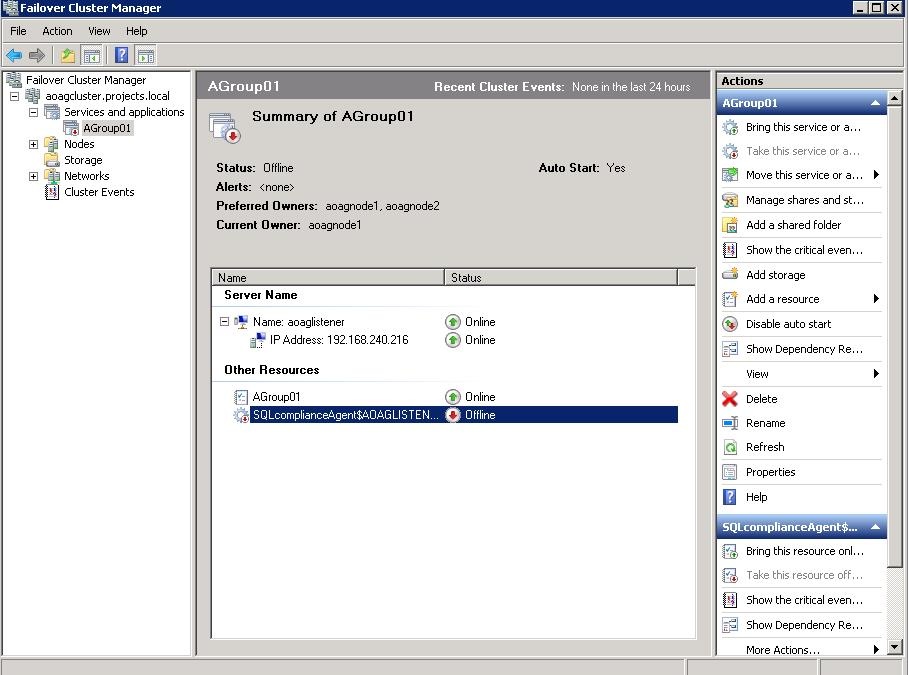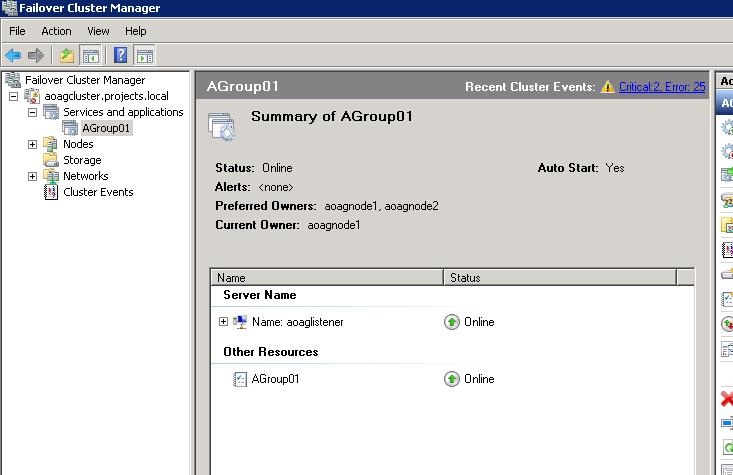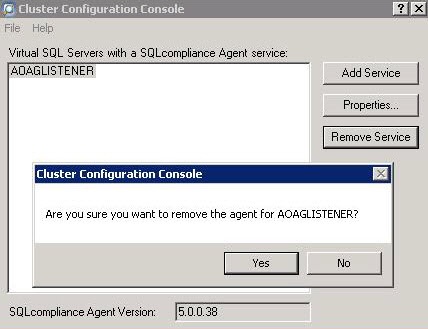Page History
...
- Open Server Manager.
- In the Server Manager tree, click Server Manager > Features > Failover Cluster Manager. The system displays Failover Cluster Manager.
- Take the cluster service agent On the Other Resources area, right-click the SQLcomplianceAgent$[listener name], and select Bring Offline.
- offline by selecting the service in the tree, clicking the cluster service agent in the Other Resources area, and then clicking Take this resource offline in the Actions panel. Verify in the confirmation message that you want to take the resource offline. In the following example,
SQLcomplianceAgent$AOAGLISTENERis the now offline cluster service agent. - Keep Failover Cluster Manager open as you will return to this view after removing the listener from SQL Compliance Manager.
- Open the SQL Compliance Manager Management Console.
- Click the listener name in the Explore Activity panel, and then click Remove.
SQL SQL Compliance Manager displays an error message concerning the inability to contact the agent when removing the listener. - Click Yes to confirm that you want to continue with removal of the instance.
- If you want to re-add this listener for auditing at a later time, , do not continue with the next steps.
If you no longer want to use this listener, , continue with the following steps for all nodes included in the AlwaysOn Availability Group. - Return to Failover Cluster Manager.
- Delete the cluster service agent On the Other Resources area, right-click the SQLcomplianceAgent$[listener name] by selecting the service in the tree, clicking the cluster service agent in the Other Resources area, and select Delete
- then clicking Delete in the Actions panel. Verify in the confirmation message that you want to delete the resource. In the following example,
SQLcomplianceAgent$AOAGLISTENERis the cluster service agent.
The following example shows that the resource is now gone after deletion. - Open the Cluster Configuration Console by clicking Start > Idera IDERA > Cluster Configuration Console.
- Select the virtual SQL Server listener, and then click Remove Service. In the following example,
AOAGLISTENERis the listener. - Click Yes in the confirmation message. The cluster service agent is removed.
- If you no longer need to add listeners, , uninstall the Cluster Configuration console.
Exporting/importing audit settings for all AlwaysOn nodes
Users can select all of the appropriate audit settings for each AlwaysOn database and export these settings as XML files. You then can import the files into the remaining instances or nodes in the group.
To import the audit settings to each node, click Import on the Summary tab. Choose the exported XML file, the information you want to import, and the servers to which you want to apply the settings. Select all the other servers in the availability group as the target for audit settings. After users apply the settings from the file, each member of their availability group is set to audit in exactly the same way as noted in the exported file. This process also allows you to add additional databases that are the part of an availability group on these servers.
Removing an AlwaysOn node from SQL Compliance Manager
To remove an AlwaysOn node from SQL Compliance Manager, first stop the agent service using the Failover Cluster Manager before attempting to remove a node instance from SQL Compliance Manager. This step must be performed if you may want to add back to SQL Compliance Manager the removed node using the Manual Deployment option without any agent deployment. In this case, ignore the error message that appears after you remove the node.
| Scroll pdf ignore |
|---|
IDERA Website | Products | Buy | Support | Community | About Us | Resources | Legal |
